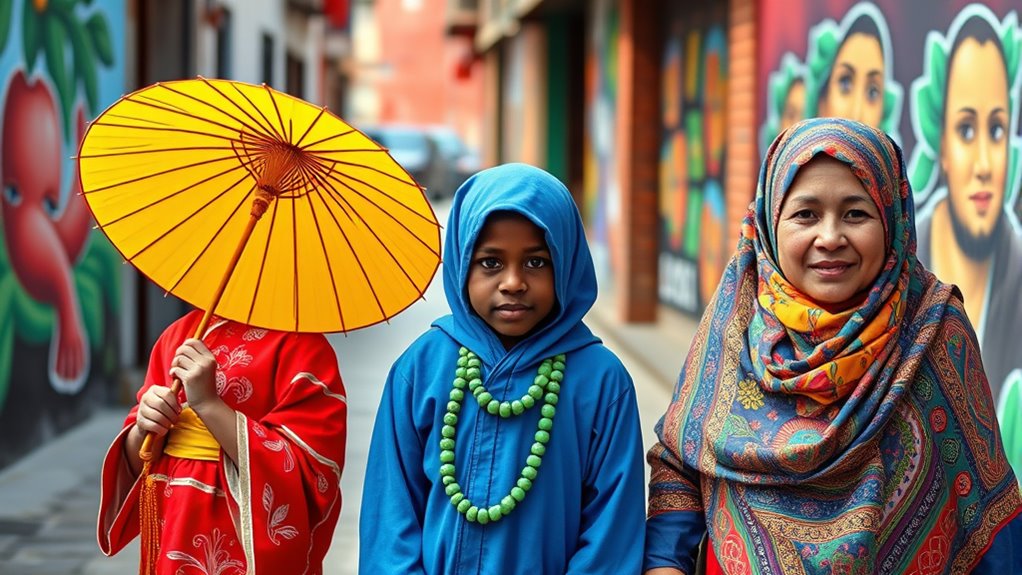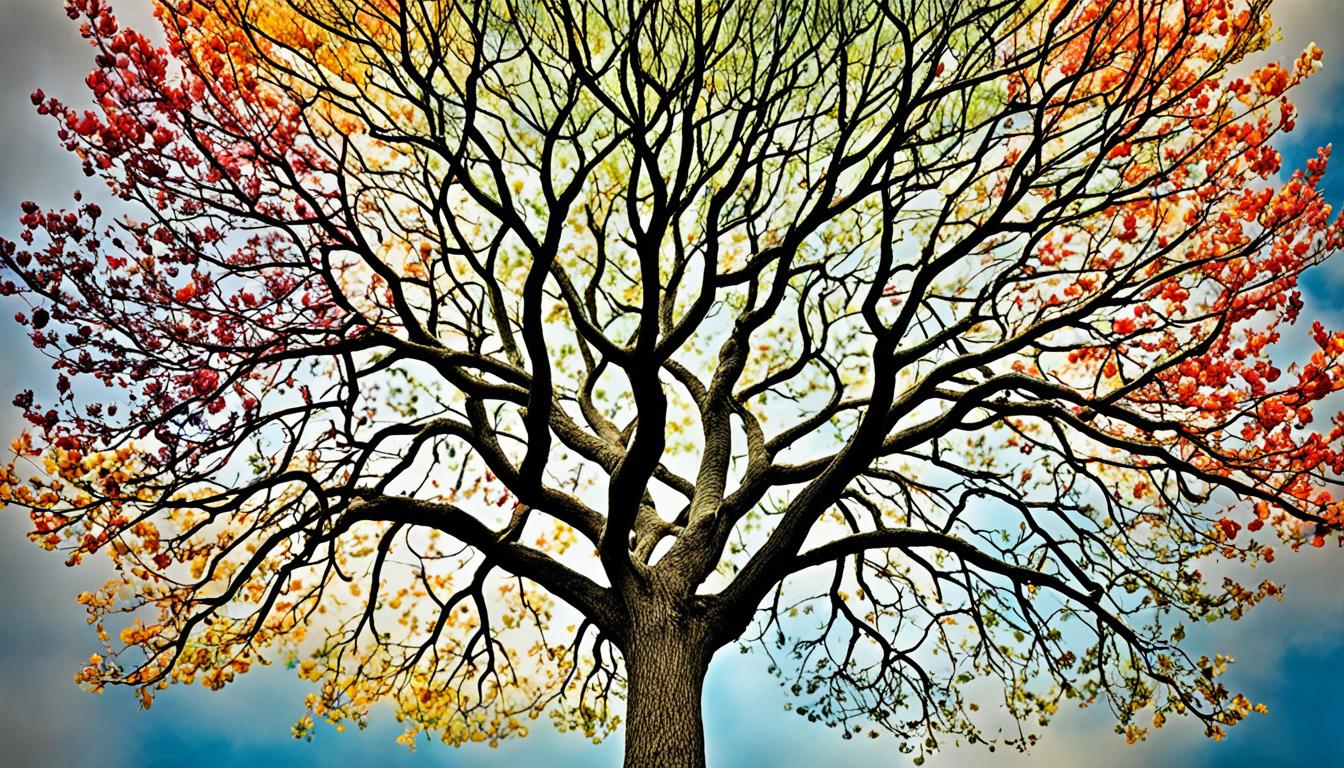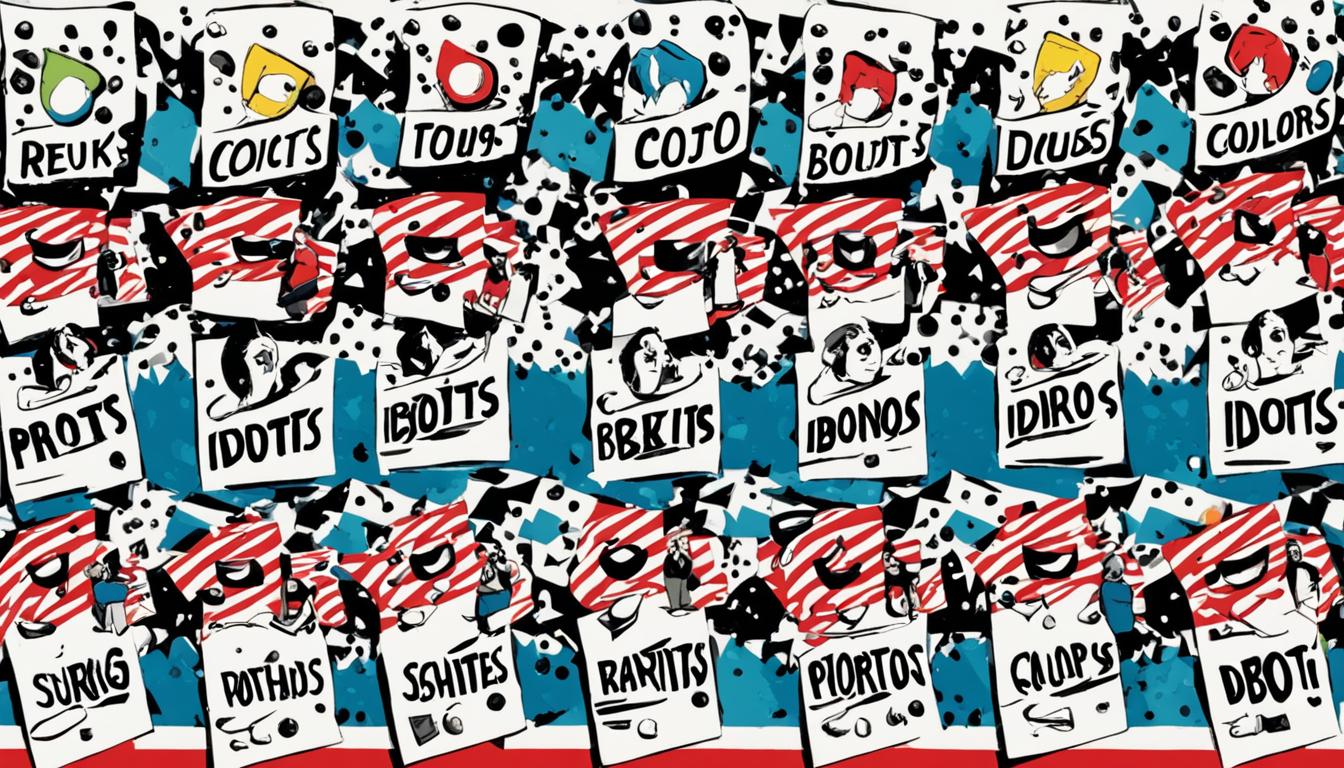You’ll notice that color meanings vary greatly across cultures. For example, white symbolizes purity in Western weddings but is associated with mourning in some Asian countries. Red signifies luck and happiness in China but can mean danger elsewhere. Recognizing these differences helps you communicate more effectively and avoid misunderstandings. Pay attention to regional perceptions, as they influence emotional responses and social interactions. Exploring this further can deepen your understanding of how colors shape cultural expressions worldwide.
Key Takeaways
- Colors have diverse cultural meanings, such as white symbolizing purity in the West and mourning in Asia.
- Red signifies luck and prosperity in China but can indicate danger or warning in Western contexts.
- Purple historically represented royalty in Europe but now also symbolizes creativity and individuality globally.
- Misunderstanding color symbolism can lead to miscommunication or offense in intercultural interactions.
- Awareness of regional color perceptions enhances effective communication, design choices, and cultural respect.

Colors are more than just visual stimuli; they carry deep cultural meanings that shape how people interpret and respond to them. When you see a color, you might think it’s simply a visual choice, but in reality, it’s often loaded with symbolism rooted in regional perceptions. For example, in many Western cultures, white is associated with purity and weddings, while in some Asian cultures, it’s linked to mourning and funerals. This difference highlights how color symbolism varies greatly based on cultural context. Your understanding of what a color represents can influence your emotional reactions, decisions, and even social interactions. Recognizing these regional perceptions helps you appreciate why a color that feels positive in one place might evoke sadness or caution in another.
In places like China, red is a powerful color symbolizing luck, happiness, and prosperity. You might see it prominently during festivals, weddings, and celebrations because it’s believed to bring good fortune. Conversely, in some Western countries, red can symbolize danger or warning, such as stop signs and hazard lights. These contrasting meanings demonstrate how regional perceptions shape the emotional and symbolic weight a color carries. When you travel or communicate across cultures, understanding these differences can prevent misunderstandings or unintended offense. For instance, gifting a white flower in some Asian traditions might be seen as mourning, while in Western contexts, it’s a sign of purity or condolence. Such nuances are vital for respectful and meaningful intercultural interactions.
Color symbolism isn’t static; it evolves with history, religion, and societal values. You should realize that what a color signifies in one era or community might shift over time. For example, purple was historically a color of royalty in Europe, symbolizing wealth and power. Today, it’s also associated with creativity and individuality in many cultures worldwide. Additionally, regional perceptions can influence the interpretation of color shades, as subtle variations can carry different connotations across cultures. These shifts are often driven by societal changes, media influence, and evolving traditions. Regional perceptions influence these shifts, as different societies attach new meanings to colors based on their unique experiences and values. This dynamic nature of color symbolism means that your initial assumptions about a color’s meaning might need adjustment when you encounter new cultural contexts. By being aware of these regional perceptions, you enhance your ability to communicate effectively and respectfully through color choices.
Ultimately, understanding how culture shapes color associations allows you to navigate a diverse world more thoughtfully. Whether you’re designing a product, choosing clothing, or decorating a space, considering regional perceptions and cultural meanings ensures your message resonates appropriately. Colors are more than just visual elements; they’re powerful symbols that reflect cultural identities and values. Recognizing this can deepen your cultural awareness and help you connect more genuinely with people from different backgrounds.
Frequently Asked Questions
How Do Color Meanings Influence International Marketing Strategies?
You should consider how color symbolism influences international marketing strategies because it affects consumer perceptions. Using appropriate branding colors can enhance your campaign’s effectiveness across different cultures, avoiding misunderstandings or negative connotations. By understanding local color meanings, you can tailor your messaging, making it more appealing and culturally sensitive. This approach helps build trust and recognition, ensuring your brand resonates well in diverse markets.
Are There Universal Color Associations Across All Cultures?
No, there aren’t universal color associations across all cultures. While some color symbolism, like white symbolizing purity or black representing mourning, holds in many places, cultural perceptions often differ considerably. You should recognize that colors can evoke varied emotions and meanings depending on cultural context. This awareness helps you avoid miscommunication and design more effective, culturally sensitive marketing strategies that resonate globally.
How Do Colors Impact Cross-Cultural Communication and Misunderstandings?
Think of color psychology as a silent storyteller shaping how you communicate across cultures. You might see red as passion, but in some cultures, it signals danger or mourning. By understanding cultural symbolism, you avoid misunderstandings and foster clearer connections. Recognizing these differences helps you navigate diverse interactions smoothly, ensuring your message resonates appropriately—avoiding accidental offenses and strengthening your cross-cultural relationships through mindful color choices.
What Role Does History Play in Shaping Cultural Color Perceptions?
History shapes your cultural color perceptions through historical symbolism and cultural evolution. You might find that certain colors evoke specific meanings because of past events or traditions, influencing how societies interpret them today. For example, red might symbolize courage or danger based on historical contexts. These perceptions develop over time, reflecting your culture’s unique history and evolving beliefs, ultimately guiding your understanding and communication through color.
How Can Designers Respectfully Incorporate Cultural Color Symbolism?
Think of color symbolism as a delicate dance—you need to move with cultural sensitivity. As a designer, you can honor cultural meanings by researching specific symbolism, consulting community members, and avoiding stereotypes. Respectfully incorporating these colors shows you’re attuned to diverse perspectives, like tuning an instrument for harmony. By doing so, you create designs that celebrate cultural richness while avoiding unintended offense, turning your work into a bridge rather than a barrier.
Conclusion
Understanding cultural differences in color associations is like steering a vibrant tapestry woven with diverse threads. By recognizing these unique perspectives, you can communicate more effectively and respectfully across cultures. Remember, colors are the language of emotions and identity—what blooms in one garden might wither in another. Embrace these differences as opportunities to deepen your cultural awareness, turning the world’s palette into a shared canvas of understanding and connection.
Felicity, our Author, pens in-depth articles and guides that delve into the heart of personal discovery. Her narrative-driven approach weaves together theory, practice, and personal anecdotes, making the journey of self-exploration both relatable and inspiring. Felicity’s contributions help illuminate the path for those seeking a deeper understanding of themselves and their relationships.









